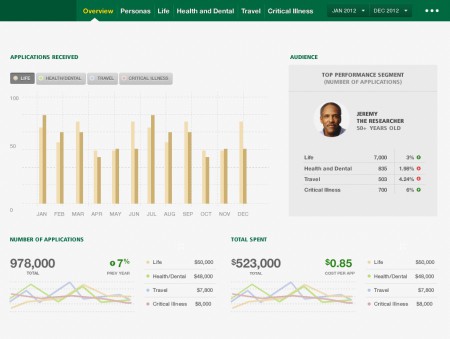 The majority of companies today have multiple sources collecting consumer data in order to better serve their audiences with products or offerings. But where are they saving all this data internally? And, more importantly, do the data inputs layer together or remain segmented? For example, is the social data being layered in with the website data and mobile data; and then layered upon the target audience personas or demographics? If not, they should be.
The majority of companies today have multiple sources collecting consumer data in order to better serve their audiences with products or offerings. But where are they saving all this data internally? And, more importantly, do the data inputs layer together or remain segmented? For example, is the social data being layered in with the website data and mobile data; and then layered upon the target audience personas or demographics? If not, they should be.
Business Intelligence Dashboards are beginning to be ever more critical for companies to put in place as business units and marketing teams become more and more empowered to lead product development and consumer programs. The core purpose and benefit is the aggregation of all key data sources into a single reporting portal or dashboard that provides a holistic view of the brands target consumer – tracking and visualizing their behaviours and engagements with product and services. This consolidated view enables forward-thinking as it empowers employees (of all levels) by providing them with real-time, up-to-date consumer insights of their target.
We here at Delvinia have been working with a couple of our clients to develop dashboards like this. For our financial client, the dashboard is all about layering their data inputs with their target audience personas to get a stronger view on the products that best satisfy their needs and wants. Because of the available holistic view of product performance mapped back against consumer engagements, their marketing and product teams are able to make quick, critical decisions and strategic improvements to consumer-facing utilities, products and communications without significant disruptions to their consumers’ ongoing brand experience or relationship.
Business Intelligence Dashboards truly facilitate the smooth evolution of branded assets, services and products over time, and the strengthening of existing brand affinity and loyalty with your target audience.
How are you sharing consumer data across your organization? Is the process still very manual or segmented? Is your organization ready to automate data collection and synthesis to allow employees to do what they do best – service the consumer?